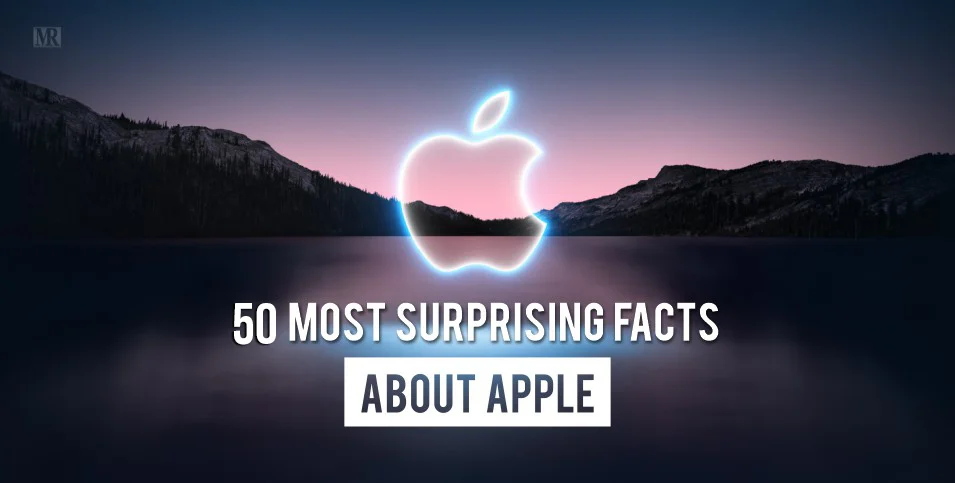In a garage in Cupertino, California, three young visionaries embarked on a journey that would forever alter the landscape of technology and innovation. In 1976, Steve Jobs, Steve Wozniak, and Ronald Wayne came together to launch Apple—a brand that would not only revolutionize personal computing but also reshape our relationship with technology itself. From humble beginnings to becoming one of the most valuable companies in the world, their story is a captivating tale of creativity, risk-taking, and relentless ambition. Join us as we dive into the fascinating origins of Apple and explore how these iconic figures turned their dreams into reality against all odds. Get ready to be inspired by the audacious spirit that sparked a technological revolution!
Introduction to the Birth of Apple
In the bustling landscape of technology, few stories resonate as powerfully as that of Apple. Founded in 1976, this iconic brand was born from the dreams and determination of three remarkable visionaries: Steve Jobs, Steve Wozniak, and Ronald Wayne. Their combined genius launched a revolution that transformed how we interact with computers and redefined our relationship with technology.
Picture two young men tinkering in a garage; their friendship fueling innovation while a third co-founder adds crucial insights to shape their fledgling company. This trio faced challenges that would threaten to derail them but ultimately led Apple on an extraordinary journey through triumphs and setbacks alike.
Join us as we delve into the story behind Apple’s inception—the friendships forged, products developed, and legacies left behind. From humble beginnings to becoming one of the world’s most influential companies, uncover fascinating apple facts about these pioneers who dared to dream big!
The Early Years: Steve Jobs and Steve Wozniak’s Friendship
Steve Jobs and Steve Wozniak’s friendship began in the early 1970s. They met through a mutual friend and quickly bonded over their shared passion for electronics.
Wozniak, with his brilliant engineering mind, was fascinated by gadgets and circuitry. Jobs was the dreamer, always looking for ways to push boundaries. Together, they formed a perfect duo.
Their late-night brainstorming sessions led them to envision a personal computer that anyone could use. This idea felt revolutionary at the time when computers were largely reserved for government or large corporations.
They complemented each other exceptionally well: Wozniak handled the technical side while Jobs navigated marketing strategies. Their synergy laid the groundwork for what would soon become Apple Inc., setting them on an extraordinary journey into tech history.
That spark of creativity and camaraderie ignited something transformative—something that changed how we interact with technology forever.
The Third Co-Founder: Ronald Wayne’s Role in the Creation of Apple
Ronald Wayne, often overshadowed by the dynamic duo of Jobs and Wozniak, played a crucial role in Apple’s inception. As the third co-founder, his contributions were vital during those formative days in 1976.
Wayne brought experience to the table. He had previously worked at Atari alongside Jobs. This connection ultimately led him to join forces with the two Steves when they envisioned a new company focused on personal computers.
His most notable contribution was drafting Apple’s first partnership agreement and creating its logo—an intricate design featuring Isaac Newton under an apple tree. However, Wayne’s cautious nature set him apart from his partners.
Just twelve days after founding Apple, he opted out of the venture due to fears about financial risks. His decision cost him a staggering fortune as Apple soared into one of the world’s most valuable companies. Despite his departure, Wayne remains an essential part of Apple’s origin story.
Apple I: The First Product and Its Impact
The Apple I debuted in 1976 as a groundbreaking product that changed the trajectory of personal computing. Designed by Steve Wozniak, it was one of the first fully assembled personal computers available to consumers. This innovation stood out from its contemporaries, which often required users to build their own machines.
The computer’s simplicity and compact design appealed to hobbyists and tech enthusiasts alike. It featured a single circuit board with a CPU, RAM, and basic components all soldered together. This ease of use made technology more accessible.
Sales began modestly but quickly gained momentum. With only about 200 units produced, each sold for $666.66—a quirky detail that has since become part of Apple’s lore. The impact? It laid the foundation for future innovations while igniting the passion for personal computing among everyday people and entrepreneurs alike.
The Launch of Apple II: Revolutionizing the Personal Computer Industry
The launch of the Apple II in 1977 marked a pivotal moment in computing history. Designed by Steve Wozniak, this personal computer was not just an upgrade; it was a game-changer.
Its sleek plastic casing and color graphics set it apart from other machines of the time. Users were drawn to its user-friendly interface, making technology accessible to everyday people.
For the first time, home users could engage with spreadsheets and games alike. The introduction of expansion slots allowed for upgrades and peripherals, ensuring longevity for consumers’ investments.
Apple II quickly gained popularity among schools and businesses, transforming how they used technology. This success solidified Apple’s position as a leader in innovation within the burgeoning personal computer industry.
As more software developers recognized its potential, the ecosystem around Apple began flourishing—creating opportunities that would shape future tech landscapes.
Controversies and Struggles Within the Company
Apple’s journey wasn’t just about innovation; it was also riddled with internal conflicts and controversies. As the company began to grow, so did tensions among its founders.
Steve Jobs and Steve Wozniak had different visions for Apple. Jobs was a visionary focused on marketing and design. Wozniak, the engineering genius, concentrated on product development. This divergence often led to clashes over priorities.
Ronald Wayne’s departure after just 12 days highlighted early instability within the team. His concerns regarding risk management contrasted sharply with Jobs’ ambitious approach.
As Apple expanded in the late ’70s and early ’80s, leadership struggles intensified. The boardroom saw fierce debates as personalities clashed over direction and strategy.
These challenges were pivotal in shaping Apple’s culture—a mix of brilliance tempered by conflict that would define its legacy for years to come.
Changing Leadership and the Return of Steve Jobs
The late 1980s and early 1990s marked a tumultuous period for Apple. After the success of the Apple II, internal conflicts and shifting leadership styles resulted in uncertainty. The company struggled to maintain its innovative edge.
John Sculley, recruited by Jobs from Pepsi-Cola, initially brought promise. However, as visions diverged, tension grew between them. In 1985, Jobs was ousted from his own company—a shocking turn of events that sent ripples through Silicon Valley.
Years passed with mixed results under new management. Apple’s trajectory seemed uncertain until a twist of fate occurred in 1997 when it acquired NeXT—Jobs’ next venture after leaving Apple. With this acquisition came his return as an advisor.
His comeback reignited passion within the brand and set forth a transformative era filled with groundbreaking products that would redefine technology once again.
Legacy and Impact of Apple on Technology and Design
Apple’s influence on technology is immeasurable. The company’s products have not only shaped personal computing but also redefined entire industries. From the inception of the Apple I to today’s iPhones and MacBooks, innovation has been at its core.
Design plays a crucial role in Apple’s legacy. Their commitment to sleek aesthetics and user-friendly interfaces revolutionized how consumers interact with technology. This focus on design continues to inspire countless companies around the world.
Moreover, Apple has set trends in marketing strategies, emphasizing lifestyle branding that resonates with users emotionally. This approach transformed customer relationships and established loyalty that few other brands can match.
The impact extends beyond hardware; software like macOS and iOS created ecosystems that facilitate creativity and productivity alike. These platforms fostered an environment where developers could thrive, leading to millions of applications catering to every need imaginable.
Ultimately, Apple remains a beacon of inspiration for future innovators aiming to push boundaries in both tech and design.
Final Thoughts on the Visionaries Behind the Brand
The story of Apple is a testament to the power of vision and collaboration. Jobs, Wozniak, and Wayne each brought unique strengths to the table. Their friendship and shared passion for technology fueled innovation that changed our world.
Steve Jobs was the dreamer, always seeing possibilities where others saw obstacles. His relentless pursuit of perfection pushed Apple to new heights. On the other hand, Steve Wozniak’s technical genius laid the foundation for Apple’s groundbreaking products. The duo complemented one another perfectly.
Ronald Wayne’s early involvement may have been brief, but his insight helped shape those first steps toward greatness. Each visionary played an essential role in crafting what would become one of history’s most influential brands.
Apple I started it all—an innovative product that captured attention and showcased potential. With Apple II came a revolution in personal computing that opened doors for countless users worldwide.
Through triumphs and challenges alike, Apple’s journey has not been without its controversies or struggles over leadership dynamics—most notably with Jobs’ eventual return after being ousted from his own company.
The legacy left behind by these three visionaries continues to inspire generations today—from sleek designs to cutting-edge technology; their influence permeates every aspect of modern life.
Reflecting on their contributions reveals how pivotal moments can create lasting change in industries far beyond our imagination—and serve as inspiration for future innovators across various fields.




